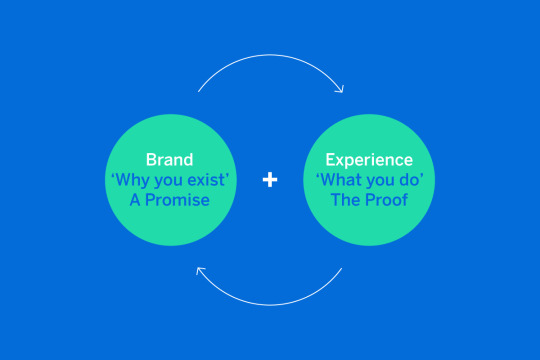Don't wanna be here? Send us removal request.
Text
Shifting Gears: How Peloton's Strategic Use of 'Good Friction' Can Enhance Its Digital Fitness Platform
As our group project, we’ve been digging into how Peloton is shifting from just selling high-end bikes to becoming a more inclusive fitness platform. They're trying to push to reach more people, especially those who might not want or can't afford the equipment in the past.
Peloton has successfully positioned itself as a luxury fitness brand by building a strong community and offering high-end fitness equipment.
However, it is now facing declining user engagement and increasing competition in the fitness industry due to factors like the return to offices and gyms post-pandemic, providing more fitness options outside the home, and product recalls damaging Peloton's reputation.
To address these challenges, Peloton announced a partnership with lululemon to reengage users and regain trust. Peloton has undergone a brand relaunch to shift perceptions towards inclusivity and accessibility, introducing new app membership tiers and a Peloton Gym feature.

What's interesting here is how Peloton could really benefit from something called "good friction" in their customer interactions as introduced in the article. Unlike the usual annoyances we try to avoid, good friction actually makes us stop and think, making our choices more deliberate. It's like when an app asks you to review your goals—it doesn't just streamline your experience but actually create an engagement. Peloton could do something similar by adding features that let users "sponteneously" set personal fitness goals or choose from tailored workout plans.
But here’s the challenge—Peloton is still seen mostly as that fancy bike company in the most cases, and that image sticks hard. They’ve got to find a way to show off the full range of what their app offers, from yoga to strength training. It seems that adding those thoughtful touchpoints where users interact with the app could help people see Peloton as more than just a hardware brand; however, we would like to the actual user journey for that in detail, from the perspective of "good friction" too.
In conclusion, Peloton’s use of good friction could benefit them in driving their shift. It's all about making the platform not just more interactive but also more engaging. This kind of strategy could really help Peloton shake up its brand image. After all, it's about creating a fitness experience that feels personal and engaging, making everyone feel included, no matter their fitness level or tech at home.

1 note
·
View note
Text
Nudging Tradition: A Journey in Digital Transformation
In a landscape marked by relentless change, digital transformation has transcended its status as a buzzword to become a critical pillar for organizational survival and success. This journey poses distinct challenges for traditional enterprises rooted in age-old practices, necessitating a blend of innovation and a nuanced understanding of cultural landscapes. Central to navigating this shift are the principles of business experimentation and nudging. As explored in two articles, these concepts offer a roadmap for navigating the digital age, highlighting the power of calculated innovation and subtle behavioral influences to drive change without forsaking tradition.
Prior to my MBA, I was in charge of digital transformation at a subsidiary. The subsidiary provided construction equipment rental services that required balancing legacy systems with new technology. Tasked with steering a tradition-laden company through the currents of digital change, the mission was clear: introduce digital innovation while respecting the ingrained corporate ethos.

Reflecting on my journey, the subtle yet impactful art of nudging was instrumental in our transformation, embodying a strategy of gentle persuasion over direct imposition. Rooted in behavioral economics, this method catalyzed a significant cultural shift within our organization. It opened pathways for traditional sales teams to willingly engage with digital strategies through constructive dialogue and cooperation. In parallel, a methodical approach to business experimentation played a crucial role. It enabled us to continuously refine our digital initiatives by rigorously testing and learning from each action, ensuring that every advancement was underpinned by robust data and in-depth customer insights.
This dual strategy of employing nudging and business experimentation exemplifies how traditional enterprises can successfully venture into the digital domain. It demonstrates that it's entirely possible to balance preserving the core essence of legacy and embracing the innovative spirit of digital transformation, leading to a seamless integration of the old with the new.
3 notes
·
View notes
Text
Enhancing Customer Experience Through the Customer Journey Maps
Adam Richardson's article on utilizing Customer Journey Maps to enhance customer experience serves as a compelling narrative on the importance of deeply understanding each phase of a customer's interaction with a product or service. By delineating the customer's journey, from initial awareness to the ultimate decision-making and beyond, Richardson elucidates how mapping these touchpoints can unveil intricate details about customer behaviors, motivations, and barriers. It is essential to address the different elements of customer experience systematically to make it more effective and enjoyable for the customers. This process emphasizes the importance of understanding the activities, motivations, questions, and obstacles faced by the customers to create a journey that meets and exceeds their expectations. This approach is not a one-size-fits-all solution, but a customizable tool that can be tailored to the unique challenges and opportunities of each business.

Reflecting on my work in developing a mobile app (Language Learning App) as my side project, Richardson's insights have been a beacon, illuminating the path toward differentiating my app in a saturated market. Previously, my focus was predominantly on the functional aspects of the app development, overlooking the critical perspective of mapping out the customer journey. This omission made it challenging to identify and understand the barriers faced by the users, leading to missed opportunities for engagement and improvement. Richardson’s emphasis on the out-of-box experience (OOBE) and the need for direct engagement with customers for fresh insights resonated with me. It revealed a gap in my approach—underestimating the power of a well-orchestrated OOBE and the necessity of viewing the app through the users' eyes to foster a fresh, innovative mindset.
FYI: My App
youtube
After following Richardson's customer journey mapping process, I discovered a methodical approach that I was lacking in my app development process. The process has not only enhanced my understanding of what it truly means to serve the user but also provided me with new and valuable perspectives.
1 note
·
View note
Text
Corona Beer
The story of how Corona became the second-most imported beer in the United States is a remarkable one in the vast beer industry landscape. This journey was marked by bold strategies, insightful decisions, and the iconic lime twist.
Grupo Modelo, the powerhouse behind Corona, embarked on an ambitious journey since its inception in 1925, which propelled it to the forefront of the Mexican beer market by 1956. Yet, the real test of its mettle came with its entry into the U.S. market, where it faced stiff competition from established names like Heineken. Corona's approach in the U.S. was both novel and intelligent.
When Grupo Modelo began organizing exports to the U.S. in 1979, its strategy was bold. It positioned Corona as a premium beer, a stark contrast to its domestic image. This strategy and the engaging “Fun Sun Beach” marketing theme redefined Corona's brand identity, associating it with leisure and enjoyment.

A distinctive aspect of Corona's branding strategy in the U.S. was its unique packaging. The clear, long-neck bottles with a minimalist label design made Corona visually appealing and stand out. Adding a lime wedge became a signature and an experience, weaving Corona into the fabric of social gatherings and beach escapades.
However, the journey was challenging. Corona had to demonstrate resilience from legal battles over its brand name to dispelling damaging rumors. Its unwavering commitment to its Mexican brewing roots and the maintenance of an authentic image were strategic moves that helped it navigate these challenges. By prioritizing quality and making the lime garnish an integral part of its brand, Corona transformed obstacles into opportunities to captivate more fans.
Marketing was a pivotal element in Corona's success story. The advertisements, with their laid-back vibe and picturesque beach scenes, resonated with individuals seeking an escape. Corona transcended its role as a mere beer to become a symbol of leisure and escapism.
Reflecting on the first lecture on Tuesday, I found profound connections to Corona's exceptional journey in the U.S. The lecture's insights on branding as a dynamic relationship and promise, beyond just a trademark, offered me a deeper understanding of Corona's lime wedge as an add-on and a ritual that encourages consumer participation in the brand experience.
The discussions on the complexities of branding and the crucial role of customer experience (CX) in delivering a consistent brand promise were eye-opening. Observing how Corona's strategies, from its unique packaging to its focus on quality, culminating in a CX that epitomizes leisure and escapism highlighted the intricate details of crafting a cohesive brand experience.

2 notes
·
View notes